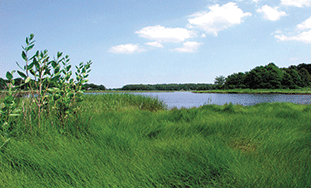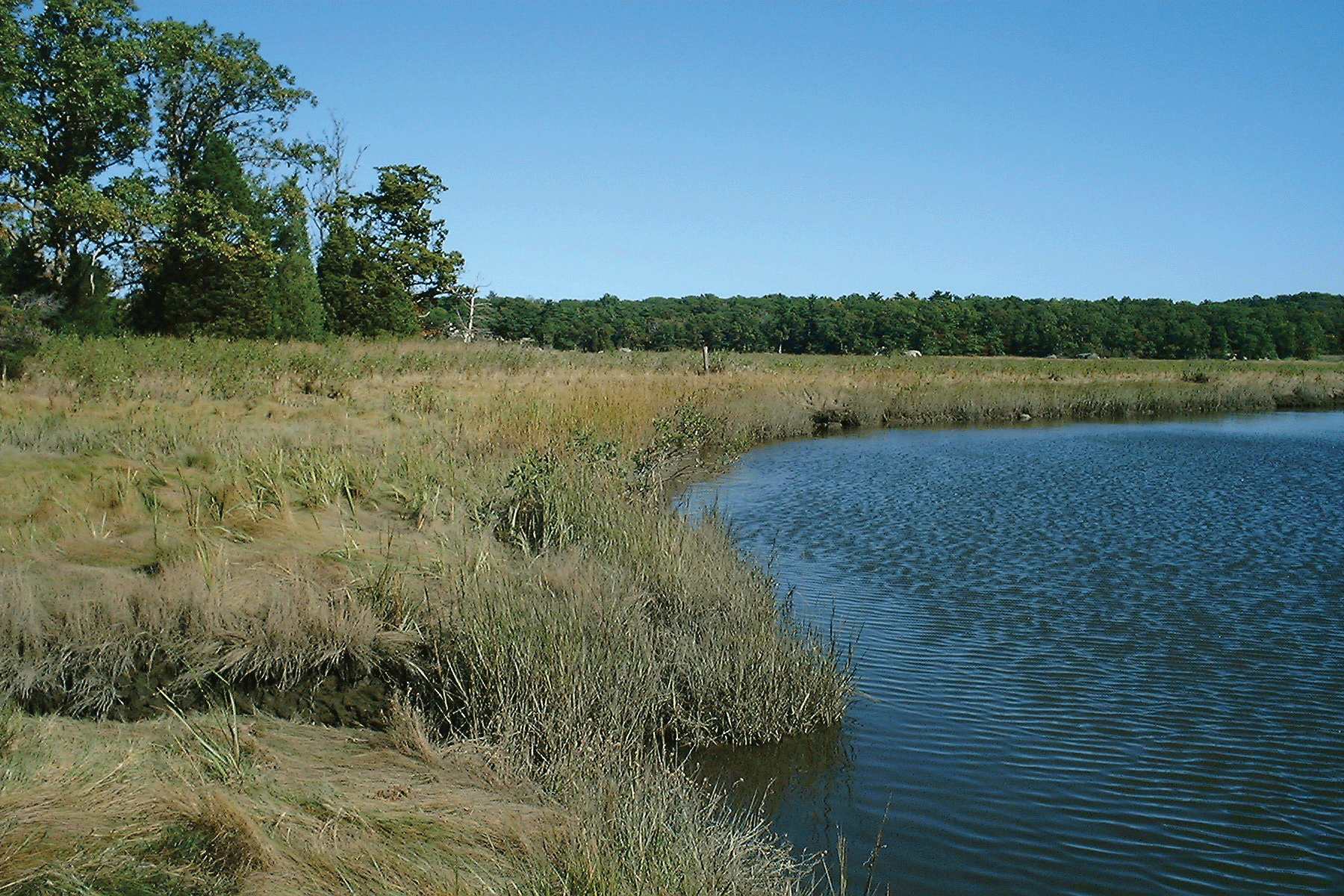Pegram Preserve.
In September 1999 the CCT purchased an approximately 14-acre property on the Gulf River from Anne C. Bushnell. Funding for the purchase came froma bequest from Al Hunt, founder of the Gulf Association, and four neighbors. CCT agreed to maintain the purchased property for wildlife habitat only.
The upland portion of the land contains a mix of deciduous and non-deciduous trees as well as shrubs and brush. Bull briars and Black Swallowswort, both invasives, exist on the property. A botanical study done in 2004 identified over 130 species including 13 invasives. The trees identified included red maple, American holly, Eastern red cedar, tupelo, Norway spruce, white pine, wild black cherry, choke cherry, white oak, swamp white oak, black oak, European mountain ash, and Norway maple.
A salt marsh, also known as a coastal salt marsh or a tidal marsh, is a coastal ecosystem in the upper coastal intertidal zone between land and open salt water or brackish water that is regularly flooded by the tides. It is dominated by salt-tolerant plants that are terrestrial in origin and are essential to the stability of the salt marsh in trapping and binding sediments. Salt marshes play a large role in the aquatic food web and the delivery of nutrients to coastal waters. They also support terrestrial animals and provide coastal protection.


